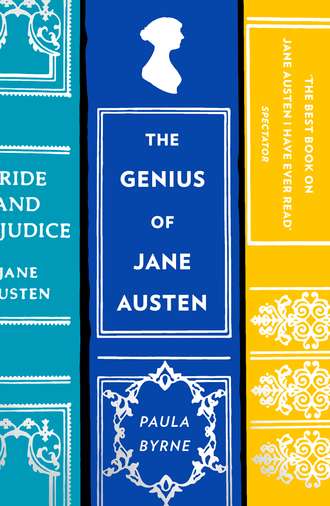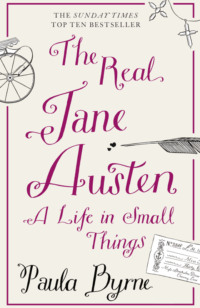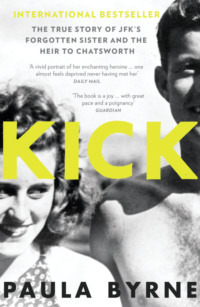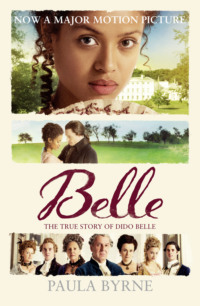
Полная версия
The Genius of Jane Austen: Her Love of Theatre and Why She Is a Hit in Hollywood
In Sense and Sensibility, Northanger Abbey and Emma Jane Austen uses the forum of the public theatre to implement crucial plot developments. In this, she was influenced by Fanny Burney, whose novels about the London ton used the playhouses as important meeting grounds for the advancement of plot lines. For example, in Evelina the heroine first attends Drury Lane to see Garrick in The Suspicious Husband and is later reunited with Lord Orville at a performance of Congreve’s Love for Love. Here she is subjected to impertinent remarks by the fop Lovel, who compares her to the character of Miss Prue, an ignorant rustic young hoyden, a role made famous by the comic actress Frances Abington.33 As Burney and Austen demonstrate in their novels, the public theatres provided an arena for the exchange of news and gossip.
In Northanger Abbey there is a special irony at play, for Austen’s novel about an ingenue’s entrance into Bath society self-consciously mirrors Burney’s Evelina: or The History of a Young Lady’s Entrance into the World. In one of the more subtle allusions to Evelina, Catherine quotes from Congreve’s Love for Love when she tells John Thorpe that she hates the idea of ‘one great fortune looking out for another’ (NA, p. 124). Like Evelina, Catherine delights in going to the play, though she has been told that the Theatre Royal Bath is ‘quite horrid’ compared to the London stage (NA, p. 92).
Northanger Abbey’s status as a burlesque Gothic novel has unwittingly deflected attention away from Austen’s parody of the heroine-centred sentimental novel popularised by female writers like Burney and Edgeworth. Instead of London’s beau monde, unfamiliar terrain to Austen, the resort city of Bath becomes her microcosm of fashionable high society. Northanger Abbey was written in 1798–99. As Jane Austen and her mother were at Bath during the later part of 1797 visiting the Leigh-Perrots, her account could well have been based on actual experience.
In 1799 Jane Austen revisited Bath, staying at Queen Square with her brother Edward Knight. This visit included a trip to the Theatre Royal: ‘The Play on Saturday is I hope to conclude our gaieties here, for nothing but a lengthened stay will make it otherwise’ (Letters, p. 47). She does not name the play, but the account in the Bath Herald and Reporter for 29 June 1799 reveals that she saw Kotzebue’s drama The Birth-Day and ‘The pleasing spectacle of Blue-Beard’ on that occasion. In the eyes of the Bath newspapers, the new Kotzebue comedy was considered to be a vast improvement on his previous works, which were notable for their immorality:
If the German Author has justly drawn down censure for the immorality of his productions for the stage, this may be considered as expiatory – this may be accepted as his amende honoyrable [sic]; it is certainly throughout unexceptionable, calculated to promote the best interest of virtue, and the purest principles of benevolence: and though written in the style of Sterne, it possesses humour without a single broad Shandyism.34
James Boaden, a professed admirer of Kotzebue, described the play as ‘the naval pendant to the military Toby and Trim’, and thought it contained ‘one of the best delineations of human nature coloured by profession’.35
The Birth-Day, a comedy in three acts, was translated from Kotzebue’s play Reconciliation, and adapted for the English stage by Thomas Dibdin (1771–1841).36 The plot is centred on a feud in a Bertram family. Twin brothers, estranged over a law suit, are finally reconciled on their sixty-third birthday by the efforts of their children, cousins who are in love with each other. The heroine, Emma Bertram, is devoted to her father and has vowed never to marry until she is finally persuaded by her cousin: ‘But if a man could be found, who would bestow on your father a quiet old age, free from every sorrow; who, far from robbing the father of a good daughter, would weave the garland of love round three hearts, who would live under his roof, and multiply your joys, by reconciling your father and your uncle.’37
Two of the best comic characters in The Birth-Day are a boatswain, Jack Junk, and a meddling housekeeper, Mrs Moral, who has taken over Captain Bertram’s household and has contributed to the family estrangement for her own devious means.38 Mansfield Park, in which a different Kotzebue adaptation is staged, shares with this other Kotzebue play not only the family name Bertram but also similar comic stereotypes in the persons of the bullying, interfering Mrs Norris and the rum-drinking, oath-swearing Mr Price.39
In May 1801 Jane Austen moved more permanently to Bath to live with her parents. She stayed until July 1806. Owing to the absence of letters during this time, very little is known of her theatrical activities there.40 Her residence in Bath coincided, however, with one of the most prosperous and exciting times in the history of the local stage. The period from 1790 to the opening of the new theatre in Beaufort Square in 1805 marked an unprecedented time of ‘prosperity, of brilliancy and of progress’.41
Bath was a fashionable resort town and was able to support a theatre of considerable standing for the society people who flocked there to take the waters. The theatre was run in tandem with the Bristol playhouse and was regarded as one of the best in the country. Provincial theatres in the Georgian era were not merely seasonal or summer playhouses, playing in the London off-season, but year-round operations. Their importance to the life and culture of their cities is suggested in the increasing numbers of royal patents granted by 1800.42 The Bath theatre had been patented in 1768, becoming the first Theatre Royal of the English provinces.43
Outside London, Bath was one of the most important theatres, maintaining a regular company which was supplemented by London stars.44 Many of the London stars had indeed cut their teeth in the Orchard Street playhouse. It was described variously as ‘a dramatic nursery for the London stage’ and a ‘probationary school of the drama to the London stage’.45 Mrs Siddons had begun her career there in 1778, and retained such an affection and loyalty to the theatre that she often returned during the summer seasons.46
One of the theatre’s main assets was Robert William Elliston (1774–1831). Intended for the church, the young Elliston ran away to Bath and made his first appearance in Orchard Street in 1793.47 Remarkably, he stayed until 1804, although ‘by permission of the Bath manager’ he was loaned to the London theatres, where he played once a fortnight, reinforcing the already strong links between the London and Bath playhouses. One of the reasons why Elliston refused to leave Bath, despite lucrative offers from both Drury Lane and Covent Garden, was his marriage. In 1796 he eloped with and married Elizabeth Rundall, a dance teacher, who, despite her husband’s success, continued her occupation.48
Despite Sheridan’s efforts to hire him, Elliston refused a permanent engagement at Drury Lane. His new wife had recently gone into partnership running a dance and deportment academy, and Elliston enjoyed his position as Bath’s star attraction. Even when he was finally lured to Drury Lane in 1804, Mrs Elliston remained in Bath. Jane Austen was aware of the unusual arrangements of Elliston’s private life. In February 1807, she shared with Cassandra some Bath gossip gleaned from her Aunt Leigh-Perrot: ‘Elliston, she tells us has just succeeded to a considerable fortune on the death of an Uncle. I would not have it enough to take him from the Stage; she should quit her business, & live with him in London’ (Letters, p. 122). This remark, which has not hitherto drawn comment from Austen scholars, demonstrates her loyalty to Elliston, both in his professional and his private life. Even though Elliston was now based in London, Austen continued to take an interest in him, and she clearly disapproved of his wife’s determination to remain with her academy in Bath.
Elliston’s last engagement on the Bath stage, before leaving for London, was as Rolla in Sheridan’s adaptation of Kotzebue’s Pizarro.49 Rolla was not a surprising choice for Elliston. His performance of the noble, virtuous warrior was one of his most acclaimed tragic roles. It was also the role that he played for his Drury Lane debut, later that year, when he took over from Kemble.50
Another Kotzebue adaptation, Lovers’ Vows, was performed at least seventeen times in Bath from 1801 to 1806.51 This suggests that Austen was familiar with the play long before she used it in Mansfield Park. Elliston played the part of Frederick. Kotzebue adaptations such as The Birth-Day, Pizarro, The Stranger and Lovers’ Vows continued to flourish at Bath, despite objections by the Anti-Jacobin Review to ‘the filthy effusions of this German dunce’.52 In September 1801 Siddons played Elvira in Pizarro alongside Elliston at the Orchard Street Theatre.53 Elvira, in particular, incited vicious attacks by the Anti-Jacobin Review which, with typically excessive rhetoric, described her as one of the most reprehensible characters that had ever been suffered to disgrace the stage. Such charges cut no ice with playgoers, who flocked to the Bath theatre to see Siddons as Pizarro’s dignified paramour.
Another comment suggesting that the Austens were theatregoers while living in Bath is to be found in a letter written by Jane’s mother to her daughter-in-law Mary Austen: ‘Cooke, I dare say will have as full houses tonight and Saturday, as he had on Tuesday.’54 George Frederick Cooke (1756–1811) was the name of the Covent Garden actor whose brilliance as a tragic actor was overshadowed by his notorious drinking problem. He was one of the great actors of the English stage, the hero of Edmund Kean. After Cooke’s death brought on by hardened drinking, Kean arranged for his remains to be removed to a better location, and kept the bone of the forefinger of his right hand as a sacred relic.55 Cooke’s reputation as a drunkard has obscured his acting abilities. His performances of Richard III and Iago were legendary, but he was considered to be an unreliable and erratic actor. One of his critics, to Cooke’s great mortification, described him in the following terms: ‘No two men, however different they may be, can be more at variance than George Cooke sober and George Cooke in a state of inebriety.’56 At Covent Garden in 1803, while playing Sir Archy MacSarcasm in Love à la Mode, Cooke was so drunk that he was hissed off stage and the curtain dropped.
Like Kean and Siddons, Cooke started his career as a provincial actor before he became famous on the London stage.57 In December 1801 Cooke returned to Bath where he played Richard III, Shylock and Sir Archy MacSarcasm. In that season, the same time that Mrs Austen was writing of him, he also played Iago to Elliston’s Othello. Cooke wrote in his journal: ‘I received the greatest applause and approbation from the audiences.’58
The last five seasons at the Orchard Street Theatre before the opening of the new playhouse in 1805 saw the introduction of several London actors onto the Bath stage. The appearance of such London stars gave prominence to the playhouse, and, coupled with the allure of Elliston, ensured its reputation as a theatre of the highest standing. Austen was fortunate in residing in Bath at a time when the theatre was in ‘the zenith of its glory’,59 and where she could see her favourite actor performing all the major roles. Elliston’s most famous roles in comedy were Charles Surface, Doricourt, Ranger, Benedick, Marlow, Lord Ogleby, Captain Absolute, Lord Townley and Dr Pangloss. In tragedy, Hamlet, Macbeth, Othello, Douglas, the Stranger, Orestes and Rolla were just a few of the characters that her ‘best Elliston’ made his own.60
Elliston was unusual in being a player of tragic and comic parts. Leigh Hunt declared Elliston ‘the only genius that has approached that great actor [Garrick] in universality of imitation’. Though Hunt preferred him in comedy, he described him as ‘the best lover on the stage both in tragedy and comedy’.61 Others praised his diversity. Byron said that he could conceive nothing better than Elliston in gentlemanly comedy and in some parts of tragedy.62 His obituary stated that ‘Elliston was undoubtedly the most versatile actor of his day’.63 Even William Oxberry’s disparaging memoir conceded that ‘Mr Elliston is the best versatile actor we have ever seen’.64 Charles Lamb honoured him with high praise in his ‘Ellistonia’: ‘wherever Elliston walked, sate, or stood still, there was the theatre’.65
Elliston finally moved on to the London stage, where Austen saw him perform. She complained, however, of the falling standards of Elliston’s acting when she saw him in London. Austen’s observations on his demise reveal her familiarity with his work from the Bath years. With the majority of Austen’s letters from this time missing, destroyed after her death, much has been lost, for, as her London letters reveal, she was a discerning and perceptive critic of the drama.
When Austen left Bath in 1806 to live with Frank Austen and his wife, Mary, in Southampton, she was forced to make do with the French Street Theatre, a far cry from Bath’s Theatre Royal. It was also during the first few months at Southampton that Austen wrote her two little playlets on baby-care. Frank Austen’s young wife was pregnant with their first child, and writing the plays proved a welcome diversion during the winter evenings. Austen also attended the public theatre in Southampton. In her list of expenses for 1807 she noted that she had spent 17s. 9d. for water parties and plays during that year.66
The French Street Theatre in Southampton was served mainly by provincial companies, but stars from the London stage made occasional visits. Sarah Siddons and Dora Jordan made visits of a few days in 1802 and 1803.67 The less talented Kemble brother, Charles Kemble, and his wife played there for a few nights in August 1808.68 John Bannister (1760–1836), one of the most popular comedians of the London stage, was also well known to the provinces. His Memoirs record that he played the provinces during the summer months from 1797 to 1812. In the course of his career he took on the roles of some 425 characters.69
Although there is no record by Jane Austen of the plays that she saw at the French Street theatre, her niece recorded one of the performances that she attended with her two aunts. In September 1807 Edward Knight and his family visited his mother and sisters in Southampton. Austen’s attachment to her niece Fanny Knight is revealed in her description of her as ‘almost another sister’ (Letters, p. 144). Austen had amused her niece with private theatricals in 1805, and when Fanny came to stay they visited the playhouse. Fanny recorded in her journal that on 14 September 1807 the party saw John Bannister in The Way to Keep Him and the musical adaptation of Kotzebue’s Of Age Tomorrow for his benefit.70
Bannister’s role in Arthur Murphy’s comedy The Way to Keep Him was Sir Bashful Constant, a man of fashion in possession of the shameful secret that he is in love with his own wife, his ‘Cara Sposa’.71 Jane Austen employed this fashionable Italianism to brilliant effect in Emma. For Emma, there is no clearer mark of Mrs Elton’s vulgarity than her references to her husband as ‘Mr E.’ and ‘my caro sposo’: ‘A little upstart, vulgar being, with her Mr E., and her caro sposo, and her resources, and all her airs of pert pretension and under-bred finery’ (E, p. 279). Scholars have debated the source of Austen’s use of the phrase, but no one has noticed its presence in Murphy’s comedy, where, spoken by the coxcomb Sir Brilliant Fashion, it surely got a laugh in the theatre.
Bannister was best known for his low roles. Leigh Hunt claimed that ‘no actor equals him in the character of a sailor’.72 The sailor, Jack Junk, in Thomas Dibdin’s adaptation of Kotzebue’s The Birth-Day was one of his best-loved roles. Bannister was also praised for his ability to transform himself into many different roles: ‘The greatest comedians have thought themselves happy in understanding one or two characters, but what shall we say of Bannister, who in one night personates six, and with such felicity that by the greatest part of the audience he is sometimes taken for some unknown actor?’73 Leigh Hunt was thinking, in particular, of A Bold Stroke for a Wife, where Bannister transmigrated into five different characters. However the comic after-piece, Of Age Tomorrow, that Austen saw in Southampton was also used as a vehicle for Bannister’s versatility.
Thomas Dibdin adapted Of Age Tomorrow from Kotzebue’s Der Wildfang. Dibdin had already adapted Kotzebue’s The Birth-Day and The Horse and Widow.74 Michael Kelly, in his Reminiscences, records that Bannister persuaded Kelly and Dibdin to adapt Der Wildfang for Drury Lane.75 Kelly describes Of Age Tomorrow as a great favourite. The ballad ‘No, my love, no’, according to Kelly, was ‘the most popular song of the day … not only to be found on every piano-forte, but also to be heard in every street’.76
Dibdin’s musical farce showed Bannister adopting three different disguises in his endeavours to woo his lover, Sophia, who is guarded by a dowager aunt, Lady Brumback, who stands to lose half her fortune if her niece marries. Bannister’s disguise as Fritz the frizeur was extremely popular, especially for his comic rendering of a story of his master breaking his leg over a bannister, to which Lady Brumback remarks, ‘Poor fellow! I wish there were no Bannisters in the world’.77 Kelly wrote: ‘Bannister’s personification of the Hair Dresser, was excellent; had he served a seven years’ apprenticeship to the trade, he could not have been more au fait in it, nor have handled the comb, curling irons and powder puff, more skillfully.’78 Bannister’s transformations into a Swiss soldier and a (cross-dressed) abandoned mother of a foundling child showed his powers of imitation at their very best.79
The appearance of London stars at the French Street theatre may be attributed to the rising popularity of Southampton as a spa town. Charles Dibdin, the Southampton-born dramatist,80 partly ascribed this transformation to the increasing number of ‘genteel families who have made it their residence’, and also to the tourists who came to Southampton for the sea-bathing.81 Though the theatre had acquired a poor reputation by the end of the eighteenth century, a new playhouse was opened in July 1803 by one John Collins.82
The French Street theatre also housed amateur theatricals from the local grammar school. The school’s headmaster, George Whittaker, was passionate about the theatre and encouraged his pupils to stage amateur theatricals for charitable purposes. In 1807 Home’s famous tragedy Douglas was acted for the benefit of British prisoners of war in France, to ‘an uncommonly crowded house’.83 In Mansfield Park, Tom Bertram’s comic remarks about the efficacy of schoolboys reciting the part of young Norval in Douglas may have been an echo to such performances lingering in Jane Austen’s memory of amateur theatricals.
Her comments a year later, in 1808, about the playhouse suggest that she had taken a dislike to its shabbiness: ‘Our Brother [James] we may perhaps see in the course of a few days – & we mean to take the opportunity of his help, to go one night to the play. Martha ought to see the inside of the Theatre once while she lives in Southampton, & I think she will hardly wish to take a second veiw [sic]’ (Letters, p. 155).
Another family descendant, Richard Arthur Leigh, observed that while Jane Austen was living in Southampton she became friendly with a Mr Valentine Fitzhugh, whose sister-in-law was an ardent admirer of Mrs Siddons who would assist her in dressing and make-up for her shows.84 There is, however, no record of any conversation that Austen might have had with Fitzhugh about the theatre, which is hardly surprising given that he was so deaf ‘he could not hear a Canon, were it fired close to him’ (Letters, p. 160).
During the Bath and Southampton years Austen’s writing was put on hold. She had produced three full-length novels before leaving Steventon in 1801, and began working on them again in 1809. Biographers and critics have been puzzled by Austen’s eight-year silence, attributing it to her evident unhappiness and displacement. But perhaps Bath and Southampton simply had more to offer in the way of public diversions and amusements than Hampshire and Kent. At Chawton Austen turned her mind once more to her novels and, with the help and encouragement of her brother Henry, began to think about publication. When Jane spent time in London with Henry, negotiating with publishers, she rarely missed a chance to visit the London theatres.
Had the majority of Jane Austen’s letters not been destroyed after her death in 1817, we would have had a much more detailed sense of her passion for the theatre. But there is enough evidence in the few surviving letters to suggest that she was utterly familiar with contemporary actors and the range and repertoire of the theatres. Her taste was eclectic; she enjoyed farces, musical comedy and pantomime, considered to be ‘low’ drama, as much as she enjoyed Shakespeare, Colman and Garrick.
3
Plays and Actors
The year 1808 was a particularly busy one for Jane Austen. She spent most of the time travelling between her various brothers and family friends. After playing Mrs Candour in The School for Scandal at the Manydown Twelfth Night party, she visited the Fowles at Kintbury and in May she visited Henry and Eliza Austen at 16 Michael Place in Brompton. The latter two, whose love of the theatre went back to the home theatricals at Steventon, were delighted to live in close proximity to several famous London stars. The actress and singer Jane Pope lived next door to them at No. 17. She had been the original Mrs Candour in The School for Scandal, playing the part until she was in her sixties. By this time, she was the only member of the original cast left on the stage.1 Having herself played the part of Mrs Candour earlier that year, Jane Austen must have been amused to be living next door to the actress who had inspired the original role.
At No. 15 Michael Place was Elizabeth Billington, the celebrated soprano singer. John Liston the comedian lived at No. 21.2 Jane Austen stayed until July, enjoying the rounds of dinner-parties, theatre trips and concerts arranged by Henry and Eliza. Henry Austen owned his own box at one of the illegitimate theatres, the Pantheon in Oxford Street.3 The Pantheon had originally opened in 1772 as a place of assembly for masquerades and concerts, which were all the rage in the 1770s.4 Boswell and Dr Johnson visited and admired the magnificent building in 1772, and Fanny Burney distilled her own experience of the new Pantheon into Evelina; her heroine is ‘extremely struck with the beauty of the building’ when she is taken to a concert there.5
The Pantheon was converted into an opera house in 1791 but was destroyed by fire a year later, losing its hope of a royal patent to the King’s Theatre in the Haymarket. Thereafter the Pantheon was rebuilt and resumed its original function as a place of concerts and masquerades until 1812, when it reopened as the Pantheon Theatre, staging the usual mixed bill of burlettas and ballet to circumvent the licensing law.
Henry Austen’s patronage of minor playhouses such as the Pantheon and the Lyceum, as well as the legitimate patent houses, suggests his unflagging interest in the theatre. Like his sister, he had no compunction about supporting the minor theatres. Unlike his brother James, who lost interest in the theatre after he was ordained, Henry’s passion for the theatre carried on into maturity; and, whenever Jane and Cassandra were in town, he was to be found arranging seats at the various London theatres. Although there are few surviving letters to fill in the details of Jane’s activities at this time (the letters stop altogether from 26 July 1809 until 18 April 1811), she surely took advantage of Henry’s and Eliza’s hospitality as she did in the following years. Starting at the latter date, there is a sufficient amount of information to provide a fair estimate of her theatrical activities up to 28 November 1814, the last time she is known to have attended a theatre.







